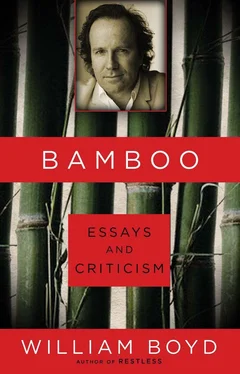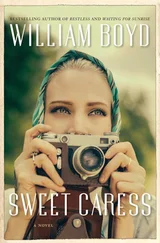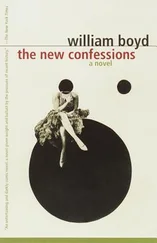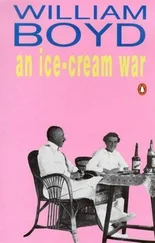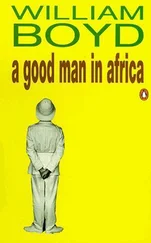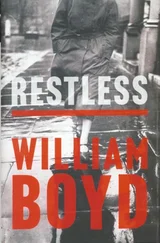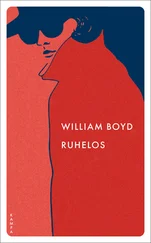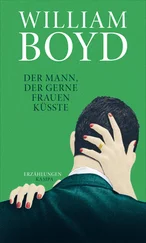Food is another filming problem. The key aim is to keep your weight-gain under a stone. Food is constantly available: bacon butties, sausage butties, biscuits, coffee for days, lunch, sandwiches, Mars bars, more coffee, more sandwiches. I had the same lunch every day for six weeks — baked potato and baked beans — it was the only way I could keep control of the waistline (it’s a very high-fibre meal), the only way I could keep a grip.
Our grip was called Dave Appleby, whom everyone called Applebox, for some reason. The grip pushes the dolly — a little wheeled cart-thing — that the camera is mounted on. Our dolly, however, had a socking great crane and a remote control camera dangling from it so we could weave through the trenches as if a disembodied spirit. We asked Dave Applebox to do some highly complicated manoeuvres. He didn’t turn a hair.
Haircuts in 1916, by one of the cyclical accidents of history, bore a remarkable resemblance to haircuts in 1998: very short back and sides, very short on top. I have a photograph of a World War One soldier with a mohican — he could be in Vietnam. We had our actors’ hair cut to the bone every week. They looked good in their uniforms; in their civilian clothes the shorn look gave them a kind of innocence.
Innocence seems to me the abiding feature of the Battle of the Somme, and its sibling, Ignorance. The war had been going on for two years yet everyone — from the generals to the private soldiers — thought the battle would be a walkover. They thought the week-long barrage before it started would kill every German soldier opposite. They didn’t know the Germans could descend to deep concrete dugouts and sit the barrage out. If you had said to a British Tommy, on the eve of the battle, that the Germans were just sitting there, waiting, he’d have thought you were joking.
Joking is vital, even in the direst circumstances. Gallows humour keeps you sane. The British soldiers joked all the time. Like surgeons in an operating theatre — or chefs in a kitchen.
Kitchener’s Army was the name given to the hundreds of thousands of volunteers who joined up in 1914 eager to “have a bash at the Hun.” And it was Kitchener’s Army, by and large, which went over the top at seven thirty in the morning on 1 July 1916, and had the soul ripped out of it. Sixty thousand killed and wounded in the first day alone. Casualties like that defeat our attempts to describe them, a figure beyond language.
Language — bad language. Soldiers swear, vilely, all the time — swear like troopers, in fact. Anyone who wants to know how soldiers swore in 1916 should read Her Privates We (published in 1930), a magnificant novel by Frederic Manning, a writer who served at the Somme as a private soldier. Manning’s fellow soldiers swear vigorously and colourfully. They craft their own profane music.
Music in film, I believe, should be music written for the film in question. I know there are lots of successful exceptions but a proper film score is so much part of the art form that it seems a missed opportunity just to tag on something from the classics or the greatest hits of the seventies. I wrote out of the blue to Evelyn Glennie asking her to write the music for The Trench. To my amazement she agreed. She and her husband, Greg Malcangi — just the two of them — came up with a film score which fulfilled every ambition I had. It works like a clever drug, subtly, covertly getting to you, like arsenic or nicotine.
Nicotine is what the army marched on, not on their stomachs. World War One saw a massive increase in smoking. Luckily for us, of our thirteen key actors, ten were hardened smokers. But even they found the authentic Woodbines we provided for them a little too much. No filters and high, high tar. On one scene we had many takes, each requiring a fresh fag. One actor begged a five-minute respiratory rest. “Seven Woodbines an hour is about my limit,” he gasped, his face a pale shade of ochre.
Ochre, sepia, chocolate, mud, burnt sienna, charcoal. All the shades of brown and its related colours delineate the world of the trench. Khaki is equally various. No one uniform looks the same. We think of World War One as a monochrome event but it was exceptionally vivid within its limited range. During filming, our world of browns seemed an unusually rich palette. It was only when we had a colonel come into the trench, his breast ablaze with medal ribbons, that we realized how confined our Technicolor spectrum was. The reds and the yellows, the vivid blues and greens, hit our eyes with particular power.
Powerful explosions can make men disappear, atomize them. We had one powerful explosion in which two men are blown to smithereens and only half of one is left. Our prosthetics expert constructed a bit of shattered torso which we strapped on to the back of an actor. When we laid him in the shell crater and the blood and the bits and pieces were added, suddenly only the top half of him was there. We all went a bit quiet.
QUIET!is the most common cry on a filmset. We had horrific problems — not with overflying aeroplanes but with hobnail boots. In the interests of authenticity we had every soldier issued with World War One standard hobnails. Crunch crunch crunch, they went. They drove our sound recordist, Chris Munro, if not over the edge, at least to its very rim.
The rim of a 1916-style tin helmet — and this was the first time in the war that tin helmets were issued — is razor sharp. So many injuries were caused by men bumping into them that an extra, protective, blunter rim was added. This later model is the only kind you can find nowadays. Our costume department had a tiring time painstakingly removing this extra rim with pliers. If they were wearied by their task they showed no sign.
Signs were everywhere in the trenches. After all, the Western Front was a labyrinth some 600 miles long and it was very easy to get lost. Battalions had specialized sign-writers so all the boards and signposts were very neatly painted. It became something of an obsession with me and the props department to get as many signs as possible somewhere in the background. Only that way would they seem, somehow, real trenches.
The trenches at the Somme were solidly constructed, deep, well revetted and duckboarded. The Somme Valley had been a quiet sector until the decision to have a battle there in 1916. People tend to forget that it took place in the middle of the summer. Wildlife abounded. No man’s land was unmown, uncropped pasture. Summer was everywhere except in the earthy confines of the trench, its only evidence in the strip of blue sky above your head. Otherwise, your world was as confined as a World War Two U-boat.
U-boats and trenches seem an unlikely corollary until you consider they share the same cramped, dangerous claustrophobia. I had the idea for The Trench after seeing Wolfgang Petersen’s U-boat movie, Das Boot. The same filthy proximity, the same absence of horizons, the war confined to a few dozen men in a few dozen yards. No escape from the tedium or the smell of fear, from the tea and bully beef or the shit and the vomit.
Vomit, in a movie, is a kind of soup. As chunky or as runny as you want. Annie Buchanan cooked up a beauty. She also does something with egg white when the actors have to spit — ordinary spit doesn’t show up, apparently. Our central character, Billy MacFarlane, vomits when he sees something horrible when he goes for a walk.
Walking across no man’s land into a hurricane of machine-gun bullets seems a stupid thing to do. But the British soldiers who went over the top on 1 July 1916 had little choice. They were trained to advance at a steady walk but they were also burdened with 70–80 pounds of equipment. Think of it as the heaviest, biggest suitcase you would take on holiday. You can’t run, anyway, for more than a few paces with that kind of weight on you. It was like a noose around their necks.
Читать дальше
